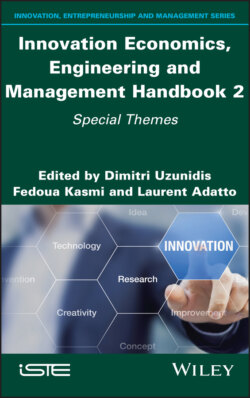Читать книгу Innovation Economics, Engineering and Management Handbook 2 - Группа авторов - Страница 23
2.3.2. Second bias: any innovation process requires contextualization of the situation
ОглавлениеEach innovation context is specific according to the nature of the innovation, the degree of novelty or the field of study. It is therefore essential, before committing further to the project, to carry out a watch in order to determine the variables of the macro-environment that could positively or negatively influence the innovative project. It is therefore common to use a macro-environmental analysis tool, such as PESTEL, to assess the political, economic, socio-cultural, technological, ecological and legal dimensions associated with the field of study. It can be carried out at several scales depending on the case: local, national and international. Moreover, in order to refine the analysis, the use of a SWOT analysis allows us to qualify the PESTEL data as opportunities and/or as threats and to verify, from this preliminary phase, the resources available to the organization to support future innovation. Evaluating an organization’s capacity for innovation is a prerequisite for the implementation of an engineering approach (Boly 2004). Indeed, an organization can find itself in difficulty if the innovative project takes it too far away from its core competencies or requires human and financial resources that it does not have. Finally, a fortiori today, as the business environment has become prone to “VUCA” (volatility, uncertainty, complexity and ambiguity), taking into account trends and weak signals in a market proves to be an undeniable asset to create, in fine, a truly disruptive innovation.
This aspect of context analysis and assessment has been facilitated in recent years by the increasing availability of information and data. This also makes it more difficult, in particular because of the availability of tools for data visualization, processing and storage. Work on data mining has found a growing echo in improving the understanding of the project context. It is the same for research on AI. In recent years, this has become an essential tool to help innovative project leaders make the “best” decisions in a complex and uncertain world.
Likewise, as we have already pointed out, needs and requirements analysis is one of the major tools of innovation engineering. Based on the concept of “customer pain” and the highlighting of dissatisfactions, the needs analysis makes it possible to refine the first part of an innovation process known as the “front end” or the upstream phase. If, in addition, the needs analysis is combined with a prospective analysis, then the analysis can be refined by looking at implicit and unspoken dimensions, such as trends and new uses. In this way, a clear vision of the needs and expectations of the parties involved in the innovation project can be obtained and potential scenarios can be developed.
Innovation is therefore systemic. Having this awareness at the beginning of the implementation of an innovation process also means having a perception of the associated project risk.
